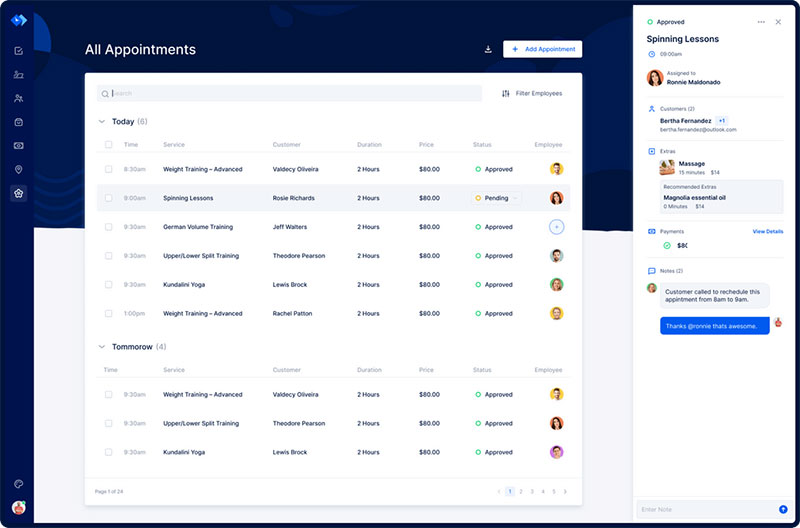Automating repetitive tasks can do much good for you and your business. Automation technology can save you lots of time and energy. That means that you can achieve more in less time. Besides, because you don’t have these mind-numbing jobs, you can focus on more important things.
Almost every industry has benefited from business process automation solutions. Some popular forms include Twittering and online shopping. More and more activities are becoming automated.
Automation technology can also benefit your business, so it is important what this means. This summary of business automation statistics will be of great help to you. As you read, you will get some exciting insights into what it can do. You will notice that as of 2022, there are things that work and things that are less successful.
Automation Market Statistics
Revolutionary technologies help to automate business processes and result in higher efficiency. Because this frees up business resources, it has given an impulse to the digital transformation of many organizations.
This is a logical explanation for the global expenditures of digital process automation. The estimated global digital transformation budget is nearly 1.8 trillion US dollars. In three years time, this number will rise to a staggering 2.8 trillion US dollars.
A recent survey by McKinsey and Co. showed that two-thirds of businesses have an automation pilot program running. This applies to at least one aspect of their business processes. That is a huge leap compared to the 57% in 2018.
Mordor Intelligence has the following statistic for you. The compound annual growth rate (CAGR) of the marketing automation software market is 19%. That means an expenditure forecast of 16.87 million USD in 2025.
Data and analytics are the main focuses of the digital transformation era. Almost 90% of businesses see information technologies as key to their operations.
Business Process Automation Statistics
Business process automation is a modern tool to lower operation costs, process times, and human errors. These business automation statistics show why many companies invest in workflow automation.
- The business process automation market had grown to 8 billion US dollars in 2020. By 2026, this number will have risen to 19.6 billion US dollars.
- 94% of interviewed entrepreneurs say that they prefer to have one unified workflow system. That means a significant shift from the current situation where several systems work at the same time.
- Almost a third of all companies have at least five automated departments. Any department can benefit from some workflow automation. The benefits of business process automation have become more relevant since the COVID-19 pandemic.
- The departments that have the highest level of automation are engineering and IT. They account for 40% of business automation. That is not to say that other departments do not invest in automation. The finance and accounting departments come in third. Other departments that use automation technology are
- Sales and marketing
- Customer support
- HR and payroll
- Task-switching takes up a lot of productive time, some 40%
- Office workers spend more than half their time searching for files
- Robotic process automation (RPA) devices can mimic some human manual tasks. The RPA market value was $1.4 billion in 2019. Researchers forecast a CAGR of 6% for the period between 2020 and 2027.
- In 2020, 24% of enterprises started using low-code process automation systems.
Automation in Sales
Automation technology is also taking over the sales departments. As a result of the current trend, 47% of sales teams want to put automation into place to make their work more efficient. The following business automation statistics support that shift:
- Sales automation technology can boost productivity by 14.5%. On the other hand, it brings marketing costs down by 12.2%.
- More than half of business professionals have definite plans for implementing automation technology. For many of them, the objective is to improve customer experience.
- Other business process automation solutions focus on nurturing leads. This had led to a 200% increase in conversions for several companies.
- 23% of all automation initiatives use Salesforce. This is to illustrate the power of this CRM that finds use in many business processes. Slack is a close second.
- Many B2B marketers have benefited from automation technology integration in their work. It has led to an average of 10% increase in sales average.
- Statistics from Sales Fusion showed the success of process automation technology. 77% of the interviewed business owners were able to increase conversions. Besides, increasing sales, automation decreases overhead costs by 12.2%. B2B marketers saw an increase of 10% in sales by implementing automation.
- Another investigation, performed by Nucleus Research shows similar encouraging statistics. Automation increases sales productivity by 14.5% and reduces overhead costs by 12.2%
- Sales automation software can use a browser. history to automate ad personalization. This can increase most sales by an additional 20%
- By next year, 30% of sales and other customer experience activities will be in the hands of robotic process automation.
- According to some estimates, the annual costs of service customer requests amount to $1.3 trillion. Companies that employ Chatbots have found a 30% decrease in customer service costs.
Automation in Marketing
Because of different forms of automation, it is now possible to interact and engage with customers in a personalized way. Others use marketing automation software to perform various repetitive tasks. This is of great help to marketers in automating and customizing campaigns. The software can now extract, process, and analyze the results of a marketing campaign.
- Some 51% of companies use automation software in their marketing department. 58% of B2B companies are planning to implement marketing automation technologies soon.
- Of the leading companies in marketing strategies, 67% use some form of automation software.
- Marketing automation expenditure increases by 14% each year. This will result in spending of $25 billion in 2023.
- 51% of companies use process automation software for part of their marketing process. Only 9% have a fully digitalized marketing department.
- Most marketers (74%) agree that the main purpose of marketing automation is to save time. Not a very surprising statistic.
- For most marketers (80%), automation leads to better lead generation and conversions (77%).
- Almost all online marketers consider the automation of business processes to be critical to success.
- Atomizy performed a survey among marketers. These are the top three challenges they face when it comes to using marketing automation systems:
- Creating quality automation (16%)
- Integrations (14%)
- Content creation (10%)
- Omnisend found that automated omnichannel marketing leads to a retention rate of 90%. The same team found that it leads to an increased purchase rate of 250%.
- As mentioned above 80% of marketers saw an increase in lead generation. Most of them also noticed an increase in conversion rates. Venture Beat also found that out of 43 automation software platforms, 50% increased leads and conversions.
- Some larger businesses have been able to save $130,000 a year in advertising costs.
- Process automation finds application in ad display. In 2016, only a third of ads were automated. In 2019 that was more than 72%.
- Using marketing automation in social media advertising can save more than six hours a week. Running a company’s social media page is a lot of work. So, leaving some of the work up to bots leaves you a lot of valuable time. Time is money, so using automation software will save you money in the end.
- Automated marketing software is very effective. Using software instead of manual email blasts results in 58% higher conversions.
- It is also very fruitful in lead nurturing. Automated emails improve revenues by 10%
- 75% of B2B revenue is the result of triggered automated campaigns.
Workforce, HR, and Skill Automation Statistics

In recent years, HR software has taken over many manual tasks. A lot of the data storage and processing in HR departments has moved to the cloud. The software that processes this type of data is human capital management (HCM) software. It can model different statistics, such as salaries, benefits, and employee performance.
It is evident that HCM software is gaining popularity very fast. The following business automation statistics illustrate the reason for the popularity.
- Statista surveyed business leaders in human resources. One of the survey’s findings is that business process management software generated $2.4 billion in 2019. That was an increase of $600 million compared to 2018.
- Men have a higher chance to get laid off as a result of automation initiatives. McKinsey Insights shows that 24% of women could face unemployment by 2023 as a result of automation. That number is 28% for men.
- Around the world, 74% feel that there will be an impact on their workforce as a result of automation. Workflow automation can result in a lowering of 11-50% in the workforce for some companies.
- On the bright side, 80% of business leaders see an acceleration in their work processes. It enables them to upscale remote work.
- Yet, 40 to 160 million women will need to change jobs as a result of automation.
- Although there are serious results for many employees, there are also many benefits for them. There is an increasing need for skilled and trained people. 49% of companies have already started automation training programs. These enable their employees to deal with changing circumstances.
- Almost half of businesses are planning to reduce their workforce as a result of process automation. Yet, 34% of companies will increase their workforce for the same reason.
- Most employees feel that automation will help them in their work. The reasons mentioned are higher efficiency, growth, and improved productivity.
- A survey by Gartner shows that business process management will also be subject to automation. By 2024, automation will take over 69% of the repetitive tasks will be taken over.
- Most people are aware of what is coming. 70% say they are ready to compete with robotic process automation. They should not forget, however, that they will need to improve their skills and efficiency.
- The purpose of most automation initiatives (51%) is to improve the efficiency of the employees.
AI and Machine Learning in Automation

Artificial intelligence, intelligence amplified and machine learning are key in enabling business process automation. Many think that artificial intelligence and machine learning are the same but that is incorrect.
Artificial intelligence refers to the science of making intelligent software, machines, and bots. These are able to make decisions and solve problems now done by humans. They often use reinforcement learning with human feedback to improve their decision-making abilities and align their actions with human values and preferences.
- Deloitte did a survey in 2020 that shows that 73% of business leaders have an AI or ML technology program.
- A McKinsey survey shows that 60% of participants from the retail branch have implemented AI. That is an increase of 35% compared to the year before. It is one of the fastest-growing industries.
- Since the rapid expansion of AI took off, 88% of finance and insurance business leaders have increased their AI efforts. That number is 76% for IT businesses. Even before the pandemic, these industries were leaders in digitalization and automation initiatives.
- A well-defined AI is important for success. 43% have a clear understanding of what they are doing and what they want to achieve.
- The reasons for implementing automation and AI are:
- Decrease costs (38%)
- Improve customer experience (34%)
- AI has led to an increase in revenue for 66% of companies.
- A survey among HR professionals showed that this number was 56% in this area.
Automate your booking process with the best app for the job
Staying organized has never been easier.
You can now manage your business and grow your brand with a single, powerful software that keeps all of your appointments in line, your clients organized and your business booming.
Trafft is perfect for business owners who need to streamline their booking experience both for their staff and their clients.
Trafft handles everything for you, even sending automated email or SMS reminders to your clients. No-shows? Not anymore!
The Trafft booking software adapts to different industries for a blissful online booking experience and employee management.
Want to know more? Check out Trafft’s awesome features to see what you are missing.
FAQs about business automation statistics
1. What is the current market size for business automation?
Business automation currently accounts for $8.4 billion in global revenue, and from 2021 to 2028, it is anticipated to expand at a CAGR of 9.8%. Its expansion is due to organizations all over the world adopting automation technology at an increasing rate.
2. What is the projected growth rate for the business automation industry in the next 5 years?
From 2021 to 2028, the business automation market is anticipated to expand at a CAGR of 9.8%. This expansion can be ascribed to the rising demand for automation technologies among organizations globally, as these technologies enable them to save time, boost productivity, and cut costs.
3. How much money are companies saving by implementing business automation?
According to an UiPath survey, businesses save an average of $1.5 million yearly by automating their processes. Automation helps to reduce errors, increase efficiency, and free up valuable employee time. This is done so that staff can focus on higher-value tasks.
4. What are the most commonly automated business processes?
Accounting, human resources, customer service, and supply chain management business operations are automated most frequently. These procedures are perfect candidates for automation because they can be time-consuming and prone to mistakes. Businesses can save time, decrease errors, and free up valuable staff time by automating these operations.
5. What percentage of companies are currently using business automation?
Over 50% of businesses are presently utilizing business automation, according to a Gartner report. As more companies experience the advantages of automation, including higher productivity, decreased costs, and improved customer satisfaction, this number is anticipated to rise.
6. What are the benefits of business automation for small businesses?
Business automation has many advantages for small organizations. Small businesses can eliminate errors and save time by automating typical processes like data input and invoicing. As a result, they are able to concentrate on duties that are more crucial for their business growth, such as customer service and business development.
7. What is the ROI (return on investment) for implementing business automation?
The return on investment (ROI) for business automation varies based on the particular activity being automated and the cost of doing so. In contrast, firms can anticipate a ROI of 30–200% during the first year of deploying automation, according to a study by Accenture.
8. How do companies measure the success of their business automation initiatives?
Businesses use measures like time savings, mistake reduction, and cost reductions to gauge the performance of their business automation programs. Companies may assess the success of their automation initiatives and pinpoint areas for development by contrasting these KPIs before and after deploying automation.
9. What are the most common challenges faced during the implementation of business automation?
The three most frequent issues encountered during the deployment of business automation are personnel skill gaps, resistance to change, and implementation costs. Employee participation in the automation process, training, and support, as well as proper planning and budgeting for implementation, are crucial for overcoming these obstacles.
10. What are the most common types of software used for business automation?
Artificial intelligence (AI), business process management (BPM), and robotic process automation (RPA) are the three most popular forms of software used for business automation (AI). Routine operations are automated with RPA, processes are streamlined and optimized with BPM, and more complicated jobs like data analysis and decision-making are handled with AI.
Conclusions on Business Automation Statistics
The statistics showed how much and how fast business process automation is growing. Many have experienced the benefits of business automation statistics. New automation ideas will appear as more companies transition into an automated environment.
Automation is something to look into if you want to expand your business. But don’t think that automation is a magical work that will make your business grow overnight.
If used in the right and with hard work it can make your business more efficient and productive.
If you enjoyed reading this article about business automation statistics, you should read these as well:
- The Many Types of Life Coaching Businesses You Can Start
- The Best Life Coaching Niches You Should Know About
- Social Media Marketing For Photographers: How To Do It Properly




